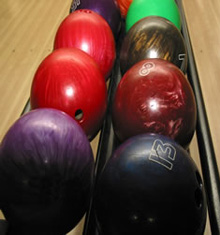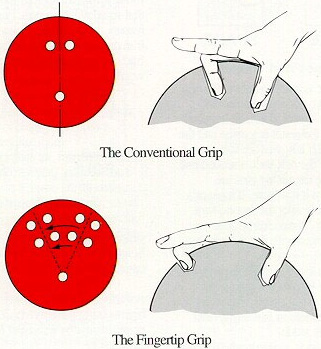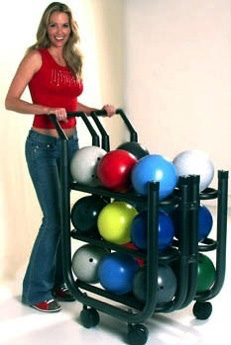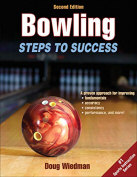Learn About Bowling Balls and Which Ball Works Best

We help you pick the right bowling ball.
Bowling balls are perfectly round and made of plastic, urethane and reactive resins. Most balls are made with a combination of materials to achieve the right reaction when thrown down an alley. Modern bowling balls generally have three holes drilled in them. One hole each for the thumb, ring finger and middle finger. Some bowling balls have a fourth, non-gripping hole, which is used to make sure the ball fits ABC regulations for drilling. Known as the balance hole, it can also be used to increase or decrease a ball’s reaction. These bowling balls are typically used for tenpin bowling. The rules for tenpin bowling allow for up to five holes to be drilled in the ball. Five pin bowling balls are smaller in size and have no holes at all. Candlepin balls also have no holes but are slightly lighter than even five pin balls. This type of game calls for the user to “palm” the hole less ball down the alley.
Usually alleys let you borrow a house ball to use for the duration of your game. These house balls are a general size that fit “most” casual bowlers. Most of the serious or league bowlers use their own custom balls that have been drilled to fit them specifically. A custom ball is purchased for many reasons, mainly to get custom sized and spaced finger holes. Some bowlers will buy a custom ball to avoid injury caused by cracked or rigid finger holes and for better control of swing and motion. Bowlers can even have glitzy swirled colors and transparent balls. Some balls can appear to have an eyeball or other objects inside them and even have your name on them.
Every bowling ball has a core on the inside that makes the ball stabilize while it rolls down the lane. The core makes the ball have contact with a different part of the bowling ball’s surface every time it revolves down the lane. These cores are made of different materials and densities. Some cores are heavy, some are more toward the cover of the ball and some are low to help the ball spin. Choose the core that fits your style.
All ten pin balls have finger holes and the way that they are spaced and located change the dynamics of the core slightly. This will also change the “hook” of the ball as it rolls. The two types of ball grips are fingertip and conventional. Anything other is fashioned after one of these main grip styles. A conventional grip is where the user’s ring finger and middle finger is set to the second knuckle. A fingertip grip calls for a stronger hold but for more control and is the same but the grip is only one knuckle length deep.

Regulation balls must be no more than 16 lbs. and be 8.5 inches in diameter for ten pin bowling. There is no regulation on how light a ball can be. The lightest balls available usually are 6 pounds, these are used by children and casual bowlers or senior bowlers with back or wrist issues. Balls weighing 12 to 16 pounds are most commonly used by professionals. The reaction of a rolling bowling ball down a lane depends on different delivery techniques and the use of gravity. When the ball is being thrown down a lane, the friction from the lane itself can affect the roll or curve of a ball. The ball not being a perfectly round sphere because of finger holes and balance holes come into play and affect the balls trajectory. The materials used in making bowling balls also play a role in the way a ball performs while in use and the lane itself can play a factor, such as how it is oiled. The right ball will also help you control your bowling ball speed.

One of the biggest debates in bowling is the issues of whether restrictions should be set on bowling ball technologies, weight of pins and lane oiling. These are new technologies that do affect the sport of bowling and the competitive edge that a bowler may get from these variables.
There are several types of balls and different brands, make sure that when you choose your ball that you do not do so in haste or because you like the looks. Bowling balls should be chosen for purchase only after the user has tried several different types of balls, cores, and grips.
If you need help deciding what type of bowling ball to use, check out Bowling For Dummies. This is the best bowling guide available and will not only help you pick out your ball, it will show you how to improve your game and raise your average. We have used this guide and our average went up by 50 points!
Martin Luther was an avid bowler who had his own bowling lane.
